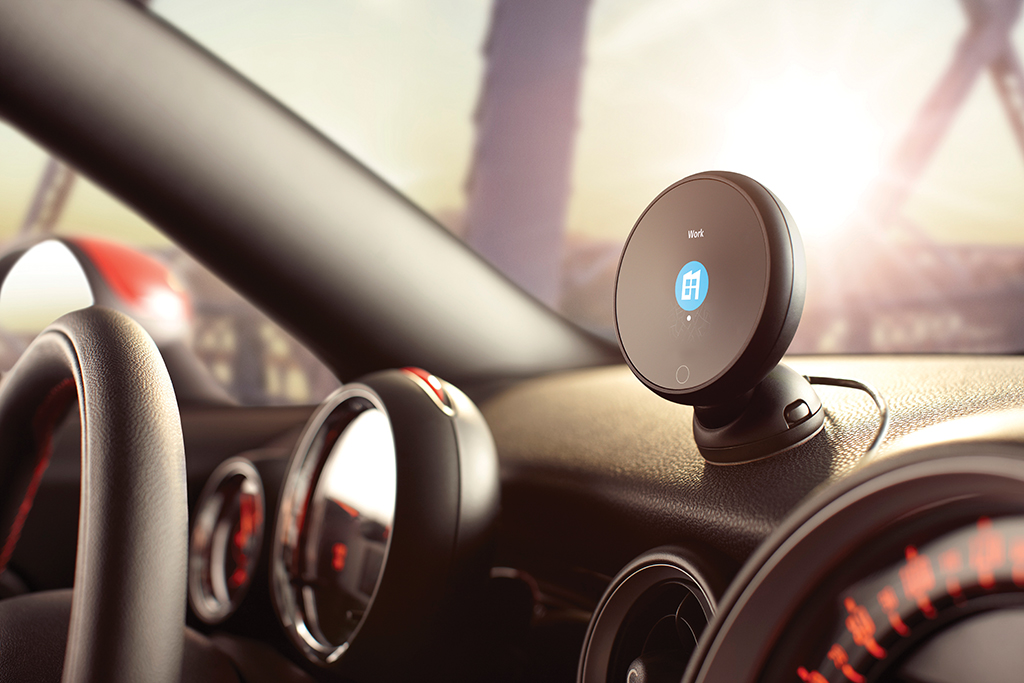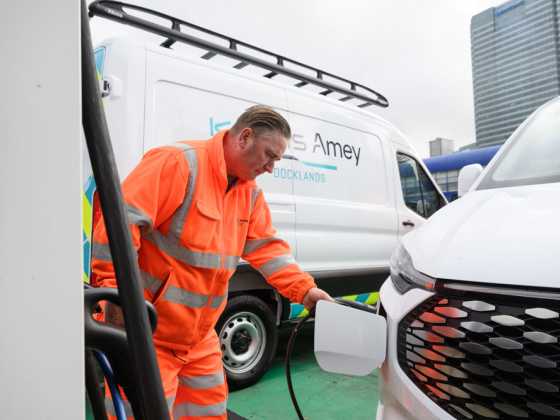Expert Panel: Telematics

Telematics generates vast amounts of data which needs to be digested and acted on if any benefits are to be realised. But how well are fleets using data? And do companies have a moral and legal obligation to act on reports of bad driving? We ask our telematics experts
Telematics has become commonplace in fleet operations and connectivity has become standard in most new vehicles. This means that there is now more data available on drivers and vehicles than ever before. The question is, are fleet managers fully utilising and acting on the data it generates? And more seriously, is a company obliged to do something if it reveals poor driving style of a member of staff?
Since the Corporate Manslaughter Act came into effect, companies can be found guilty should their staff be killed whilst driving for work, if there is evidence that there were serious management failures resulting in a “gross breach of duty of care”. What’s more, in February 2016, tougher sentences were introduced for those found guilty of corporate manslaughter.
Companies and organisations must therefore demonstrate that they are actively assessing the risks involved with driving for work, such as driver hours and journeys, and make sure they act on any information that flags up safety issues.
Colin Ferguson from Trakm8 says fleet managers have both a moral, legal, and financial duty to act if an employee is constantly flagged for poor driving. He says: “Systems that flag poor driving are not about overly nit-picking by fleet managers – such drivers pose a risk to themselves and to others.”
“In terms of compliance,” Colin continues, “fleets are legally obliged to manage risks for at-work drivers, just as the company would manage risk for any other aspect of its business.”
But taking action when a dangerous driver has been highlighted does not need to be a negative experience, believes Mike Hemming from Masternaut. He says: “Big changes can occur by simply incentivising positive behaviour, instead of ‘punishing’ risky driving. Training, rather than punishment, often has a more positive effect as well, because it raises awareness and lowers defensiveness.”
Mike continues: “One of the most effective means to addressing driving style is in-cab coaching. Installing a device in the car that beeps when you accelerate or brake harshly takes the personal ‘insult’ of being criticised out of the equation, and turns it more into an interaction similar to a fitness tracker.”
Martin Kadhim from Lightfoot echoes this belief of encouraging the driver and keeping the experience positive. He says: “Lightfoot works directly with the driver in the vehicle in real-time, meaning drivers immediately improve to an acceptable level (KPIs) and sustain this improvement. Good drivers are rewarded through the Lightfoot platform and Lightfoot works with key strategic partners and client internal teams to give the small minority of drivers who cannot reach the standard all the remedial help required.”
Big brother
Telematics have reached new levels of sophistication and help fleets in numerous aspects of their work. But is there still the mentality of telematics being a Big Brother operation, especially amongst drivers?
Colin Ferguson says that this mind-set does still exist, but it tends to stem from new users of telematics. “Once employees have a better understanding about the benefits of tracking and driver behaviour, then their perceptions rapidly change,” Colin comments. “Instead of viewing telematics as spying on their speed, they realise it is actually about reducing their risk of being involved in an accident.”
Mike Hemming from Masternaut also believes that there is still the big brother perception but adds that it is possible to change behaviour without that ‘control’ element. He says: “When discussing issues with drivers, you can always run into debates about the accuracy of the system or issues with actually remembering what happened, as well as defensiveness. I personally can’t remember when I drove down which road even three days later, much less at what exact speed I drove. But when the in-cab coach beeps at me as I’m braking harshly, I can learn from that feedback, because it makes sense in the moment. That way, I can adapt my behaviour without my manager ever looking into the system.”
Martin Kadhim highlights the importance of communication, appreciation and trust to take away any negatively surrounding telematics. He says: “Half of Lightfoot clients do not ever use the optional tracking function; their focus is purely on making sure Lightfoot users are being rewarded for driving well. We believe that from the driver to the CEO, there must be communication, appreciation and trust. Driving is hard and drivers deserve to be rewarded for being safer and more efficient.”
A change of mindset
Colin Ferguson also believes that communication is key to gain acceptance of telematics: “It is not unusual for drivers to be sceptical of telematics, or even sometimes openly hostile to the idea. However, time and again, the feedback from employees is that they rapidly change their minds once they understand how it works and why it is being deployed.
“Communication is absolutely vital in overcoming early prejudices or concerns. But the real change comes once the system is in place and they see how telematics protects them just as much as it is protecting their employer.”
Transparency is also crucial for gaining trust, according to Mike Hemming from Masternaut. He comments: “Skepticism is a normal reaction when change is coming to a business. Through the many years of deploying telematics solutions, the Masternaut Professional Services team has become very adept at answering challenging questions from drivers, managers and union representatives. Ensuring that we are open about the way in which the system collects data and more importantly how it will be used, predominantly overrides any scepticism that we see.”
Mike adds that feedback from drivers is positive once they have a chance to reflect. He says: “One driver has remarked that when they feel an increase in the harsh driving alerts it is often a reflection of tiredness on a long journey, and they use that as an indication that a break would be beneficial.”
Martin Kadhim from Lightfoot believes that it doesn’t take long to be “won over” by the benefits from telematics: “When organisations recognise the benefits gained simply through addressing poor driver behaviour at source with Lightfoot, they are quickly won over. If they’ve experienced a quagmire of data, and they have been accountable for translating it into behaviour change, once they see that something can do that for them in an effective and sustained manner, that scepticism quickly dissipates.”
Managing data
How can telematics providers help fleet managers avoid ‘data overload’ from the information generated from telematics?
Martin Kadhim from Lightfoot explains the issue that some companies may face: “Telematics plays a key role in highlighting problems within fleets to management. However, often fleet managers feel they are simply overloaded with data confirming that problems exist, but then additional actions are required to solve them.
Telematics might well be useful in that it notifies management of the problems, but additional actions are required to then solve them.
“In order to get the most benefit, fleet managers and businesses need to first understand what the key challenges are that they need to resolve. In our experience, what customers really want, yet struggle to achieve, is much safer, more efficient and more mindful drivers. It’s important to give them the tools to make this possible.”
Colin Ferguson from Trakm8 says: “A good telematics provider will have listened to the customer and accurately identified the fleet’s KPIs at the outset. This is vital in helping the fleet manager to analyse the data and take appropriate actions. At Trakm8, we follow this up with regular visits from account managers, to help fleets properly understand the data and ensure that we help them to meet their objectives on improving safety and efficiency.”
Mike Hemming from Masternaut adds: “ROI analysis and reporting is a critical element to show the impact telematics has had on a business. As telematics experts, Masternaut Professional Services are able to offer tailored management information reporting to customers to demonstrate the benefits the business is seeing from using the data.”
Expert final thoughts
Colin Ferguson
Fleet managers have both a moral, legal, and financial duty to act if an employee is constantly flagged for poor driving. Systems that flag poor driving are not about overly nit-picking by fleet managers – such drivers pose a risk to themselves and to others. Trakm8’s driver behaviour solution also identifies when employees are wasting fuel, which is undesirable from both an environmental and a financial perspective. In terms of compliance, fleets are legally obliged to manage risks for at-work drivers, just as the company would manage risk for any other aspect of its business, such as health and safety in the office, warehouse or on the shop floor.
Martin Kadhim
Drivers should be equipped, empowered and motivated to want to drive better. It’s important to give them the tools to make this possible and we support our clients throughout to make sure they not only set a standard for driving, but that their drivers are able to meet that standard throughout, without management burden. Lightfoot was developed in partnership with driver-psychology experts at the University of Bath to empower and motivate drivers to improve their driving styles. Our unique engagement proposition offers drivers personal rewards and benefits through a range of insurers, brokers, national retail brands and other partners to incentivise better, greener, safer driving.
Mike Hemming
Skepticism is a normal reaction when change is coming to a business. Through the many years of deploying telematics solutions, the Masternaut Professional Services team has become very adept at answering challenging questions from drivers, managers and union representatives. Ensuring that we are open about the way in which the system collects data and more importantly how it will be used, predominantly overrides any scepticism that we see. We have had many drivers reflect on the experience of driver behaviour following its implementation. One driver has remarked that when they feel an increase in the harsh driving alerts it is often a reflection of tiredness on a long journey, and they use that as an indication that a break would be beneficial.






